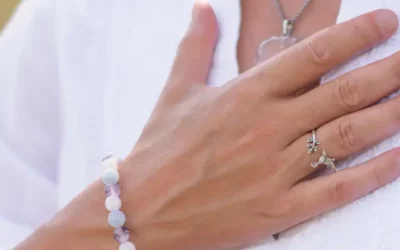Guest Blog by Anita Gupta, Swaroop D and Rashi Goel
THE FIRST STEP TO AWAKE: EACH COACH MUST ACCEPT IMPLICIT BIAS AS TRUE FOR THEMSELVES
Biological diversity is woven into the fabric of humanity and is responsible for survival of the human race. Over time, this diversity has rooted itself in our minds as implicit bias which has further resulted in an additional layer of social bias. A coach’s personal evolution journey can only begin with the realisation that they also hold biases within their own consciousness.
Biological “Inequality” Builds Strong Gene Pools
Biological differences in fauna and flora are a result of natural selection over millions of years. Differences that increase chances of survival against climate, predators, or environment, get embedded into the gene pool.
The same species could evolve to look very different from each other in different regions. For instance, take the Blind Fish of Australia.

The Blind Fish of Death Valley (Australia)
These fish have evolved to survive in an environment of total darkness in underground rivers and lakes. Over time, the Blind Fish have lost genes that make eye tissue. Not having a vulnerable outer eye is an advantage. Normal fish would run into rocks causing bleeding in the damaged eye and possible death. The Blind Fish can run into rocks while foraging for food and still survive.
 The Extinction of the Mammoth
The Extinction of the Mammoth
The Mammoth was suited to the Ice Age, but quickly became extinct because it could not survive the warm climate and was unable to defend itself against hunters. However, the same species evolved to become the hardier Elephant that survives to this day.
Natural Selection Selects for Beauty as Much As it Selects for Survival
The belief that natural selection only favors survival of the fittest has been turned on its head. That selection is based purely on aesthetics and pleasure, and not purely for fitness or survival, was first put forward by Charles Darwin himself. A little over a decade after he published “On the Origin of Species”, he published — “The Descent of Man, and Selection in Relationship to Sex.” Here, he theorized that amongst organisms that reproduce through sex, selection occurs not based on the fittest candidates, but the most attractive.
He based this on the observations that natural selection could not account for highly decorated males —bright buttocks and faces of monkeys and apes; the white legs and backside of the Banteng bull, in Malaysia; the tail of the peacock, that made it difficult to fly and hindered survival but attracted pea hens for mating. Darwin called this ‘Sexual Selection”. However, he could not reconcile himself to this theory as it was in sharp contrast his survival of the fittest thesis.
A majority of modern biologists challenged this view and believe in only the theory of natural selection based on the fittest. However, David Rothenberg and Richard O Prume agree with Darwin. David Rothenberg, in his book Survival of The Beautiful puts forward the idea that beauty is not a random choice, but an intrinsic choice made by nature. Beauty also, not fitness alone, drives evolution.
Richard O Prume has studied this phenomenon at length in the world of birds and has taken the thesis forward. After studying more than 10,000 bird species, he has concluded that fitness is a downstream result of aesthetics. For instance, while the large plume of the male peacock makes it difficult to fly and survive predators, the progeny of a peacock with rich plumage is healthier. It takes energy and fitness to grow such a tail and to survive with it, hence an aesthetic tail is also a signal of fitness.
The difference between flora, fauna and humans is that humans are a sense making species. We have taken biological diversity and created meaning- both good and bad around it.
Humans are Positively Biased to Biological “Gifts”
As Agustin Fuentes explains in his Psychology Today article, “by virtue of being biologically diverse, Homo Sapiens are unequal. Inherently, no two humans are born equal. Height, face shape, skin color, muscle density, running stamina, length of fingers, size of head, shape of nose to name just a few, lead to fundamental differences between two humans. While no two humans are biologically the same, we are all equal from the lens of evolution. We are all equally good at being ‘Humans’. No race, individual or group is better at being human than the other.”
But some humans, by luck of draw, are genetically gifted with natural advantages. When these natural advantages are combined with hard work, resilience and an indomitable human spirit of winning, the advantages compound. So, biologically gifted humans perform miracles and move humanity forward.
Utilizing these biological advantages to succeed, garner wealth and accolades is not frowned upon. It is considered a blessing, a favorable luck of draw and is in fact, encouraged. Take the example of Michael Phelps, Einstein and Kim Peek.
 Michel Phelps has been biologically gifted to have multiple advantages as a swimmer.
Michel Phelps has been biologically gifted to have multiple advantages as a swimmer.
His torso to leg ratio is high, which gives him a broad chest that can push through water with force.
His relatively shorter legs create less drag effect in momentum.
He has a 3inch longer wingspan than the average human, giving him an advantage of traveling a longer distance than his competitors.
Double-jointed ankles give his kick unusual range.
Additionally, Phelps’ body produces just half the lactic acid of a typical athlete —since lactic acid causes fatigue, he can push his body harder than the average athlete.
These natural advantages, combined with the intense training routine, his will to win and grit make a global champion and Olympic gold medalist.
 Einstein’s brain was different from the average human.
Einstein’s brain was different from the average human.
The area of difference was that his brain had more glial cells than an average male. Glial cells provide support and nutrition in the brain, form myelin, and participate in signal transmission.

Kim Peek’s Brain Was Unique.
Kim Peek, an autistic, on whose life the movie Rainman was made, had a very different brain than the average human. Kim was born without a corpus callosum connecting the two hemispheres of his brain. This meant he could read the left side of a page with one eye and the right side with the other. Not only simultaneously, but also with speed. He also had total recall of everything he ever read.
Unlike Nature, Humans Physically Manipulate the Body to “Create” Beauty, This Embeds as Implicit Bias Overtime
Humans take biological differences beyond reason and logic.
We have valued standards of beauty so much, that we have manipulated the body to attain high levels of beauty. These have seeped into culture and human psyche as implicit biases.
 Foot Binding
Foot Binding
In china, for more than 1000 years, from 10th century to as recent as the 20th century foot binding was followed diligently. Feet that were 4inches and less were considered most beautiful and called Gold Lotus Feet. This deformed the feet permanently and caused severe mobility issues. What started off as a genuine practice of celebrating beauty, over time, turned into a bias that women are weak and need to be home bound.
 Elongated Neck
Elongated Neck
In Asian and Africa cultures, an elongated neck is believed to be attractive. From a young age, girls start wearing rings around their neck, adding more and more rings as they grow older. Over time the neck weakens, the clavicle and ribs are pushed down and the neck becomes dependent on the rings for support. Incorrect removal of the rings can cause instant death.
Again, creating a bias that women are weak and not physically strong.
Over Time, Biological Inequality Has Become Implicit Social Bias, We Are All Driven by It
We have come to believe that some social groups are ‘better’ than others just by virtue of their skin color, race, height, gender, age or sexual preferences. Not only do we mistakenly believe some biological characteristics signal more trust, honestly and leadership, but we also believe that other biological characteristics signal inferiority, mistrust or weakness
This implicit bias has seeped into each and every aspect of our lives.
For instance, there is a distinct bias to taller men when it comes to picking CEOs. Malcolm Gladwell in his bestselling book Blink, proves this. He mentions that in the U.S., 14.5% of all men are six feet or over. However, 58% of Fortune 500 CEOS are over six feet!
Marianne Bertrand (Chicago University) and Sendhil Mullainathan (Harvard University), found that if you had a white sounding name you had a 50% more chance of a callback for an interview vis-a-vis an African American sounding name.
In an Indian version of the same study carried out by Abhijit Banerjee, Marianne Bertrand, Saugato Datta and Sendhil Mullainathan, it was found that there was significant discrimination when it came to callback rates for jobs for upper castes vis a vis backward castes.
The Journey to Awakening Begins with Realization That Even as Coaches, We Have This Implicit Bias Embedded into Our Consciousness
Being human means, we have been seeped into biases right from the beginning. Even a coach is a product of their upbringing, culture, value systems and education. A coach is surrounded by people, relationships, opinions, and is bombarded by external stimuli of social media, news and entertainment. All of this combine to create a worldview, belief system and a set of values that create implicit and explicit biases, conscious or unconscious, overt or covert.
Believing that “because I am a coach, I am free from all biases” is a barrier to personal growth. The sooner a coach understands the biases they hold, the faster their journey to becoming a transformative force in service of their clients.
A coach can hold both positive and negative biases. They can be positively biased to a certain profession, manner of speech, profession, belief system, age, mannerisms of a client even without realizing it. At the same time, they can equally be negatively biased to other traits like appearance, beliefs, thinking of the world-view of the client.
How does the coach then self-regulate?
- The coach needs to first acknowledge that they have biases (self-awareness)
- They need to accept without judgement and negative self-talk that it is natural for them to have these biases.
- Lastly, they need to analyze and work through their inherent biases enough, to make sure that at least for the period of the coaching session, that they are able to keep biases out and maintain an “unconditional positive regard” for the client’s worldview.
- However, if they realize that they have biases and that these will affect their performance as a professional coach, they need to know how to ethically handle the situation and regulate themselves, constantly referring to the Code of Ethics of ICF/EMCC/any other certification body they are associated with and eventually address it through their own efforts of continuous self-development.
Join Authors: Anita Gupta, Swaroop D and Rashi Goel for their session on “Recognising and Overcoming Biases” on the 24th of September 2020, at the Awake Aware Arise conference.



